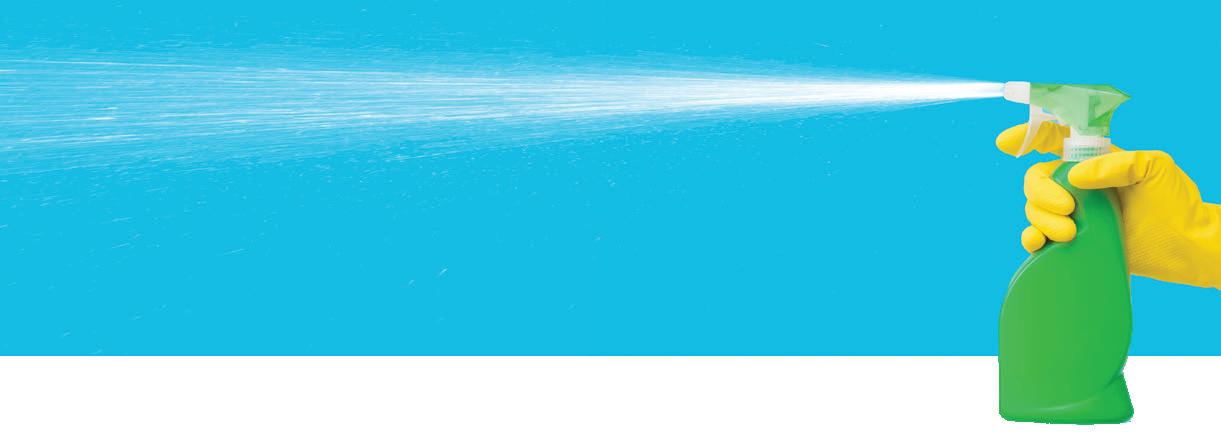
3 minute read
Just Plain Everyday Chemicals?
By Belinda Burchick, RPh, BPharm
With fall approaching, your household to-do list is overflowing with cleaning and bringing everything in from the outside. Many times, we are all in a hurry and don’t take the time to read the labels or take the appropriate safety precautions when handling chemicals. We get complacent with everyday household chemicals because they are perceived as safe. Before you begin your fall cleaning and storage, you need to inventory your household chemicals. Taking a few simple precautions before handling, storing and discarding your everyday household products can keep these tasks safe and enjoyable.
Many chores around your home, yard, garden, garage, require use of products that may contain hazardous ingredients:
paints, cleaners, automotive fluids, batteries, weed killers and insecticides. Many of these everyday household chemicals can be toxic, flammable or corrosive.
First, read and understand the product labels. There are many reference books and information online regarding ingredients, what they do and their hazards. Use appropriate breathing masks, gloves and protective clothing.
Second, get only the amount you will use to avoid storage. Try to keep in original container or have it well-marked. Keep in mind that cats tend to walk on shelves and knock items to the ground.
Discard these products with care. Never empty these products on the ground, into drains or toilets. Find out from your local trash collector what items are recyclable or what items cannot go into the trash. Find out where to dispose of batteries; they can cause serious health injury due to the metal content.
Listed below are just plain everyday chemicals that can have potential health effects, and require proper handling for safe use, storage and disposal: • Benzene some paints, paint thinners, petroleum, motor oils and resins, is cancer causing and is toxic if swallowed, inhaled or absorbed by the skin. • Toluene some paints, thinners, lacquers, wood putty. Can cause liver and kidney damage. • Mineral Spirits oil-based paint. A skin, eye, nose throat and lung irritant. High air concentrations can cause nervous system damage, unconsciousness and death. • Petroleum Distillates car wash and polish, tar and bug remover.
Associated with skin and lung cancer, irritant to skin, eyes, nose and lungs. Entry into the lungs may cause fatal pulmonary edema, most marked
“Danger, Harmful or Fatal.” • Bleach many household products. It is a strong corrosive. It will irritate or burn the skin, eyes and respiratory tract. It may cause pulmonary edema or vomiting and coma if ingested.
WARNING: never mix bleach with ammonia it may cause toxic fumes which can lead to death. Formaldehyde mold and mildew cleaners, air fresheners, paints, glues. It is also listed on labels as formulin, urea, methylene oxide, oxymethyline, methylaldehyde and oxomethane. Highly toxic, known carcinogen. Irritant to eyes, nose, throat, and skin. May cause nausea, headaches, nosebleeds, dizziness, memory loss and shortness of breath. Triclosan some antibacterial cleaners. Absorption through the skin can be linked to liver damage. Sodium Laurel Sulfate some engine degreasers, garage floor cleaners, toothpastes, shampoos and soaps. Why is it used so often? Because it foams up nicely and makes a rich lather. Believe it or not, this chemical can potentially damage hair follicles, cause hair loss, harm the eyes and is implicated in the formation of cataracts in adults.
Don’t get me started about insecticides and weed killers. Read precautions or look up online. Please wear a respirator type mask, goggles and gloves when spraying.
This is just a short list of the most common chemicals used in our everyday life. They do the job, but you just need to use the necessary safety precautions when handling.
Stay safe and enjoy your fall cleaning! n




